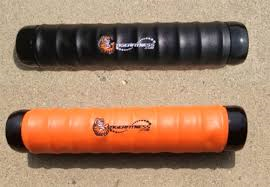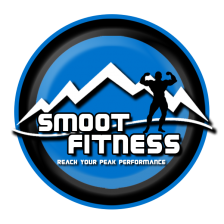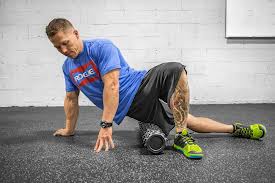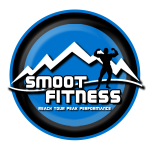Nick Smoot-Owner of Smoot Fitness
Smootfitness.com
There has been a rise in awareness recently on the importance of mobility and flexibility work. Stretching, joint distractions (using a band to pull apart two joint surfaces and clear up the joint capsule), SMR (Self-Myofascial Release), dynamic mobility exercises; they are all extremely important in your ability to maximize performance and stay injury free. Now the mobility tool that’s effectiveness is seemingly questioned the most is the foam roller. What does a foam roller do? How do you use a foam roller? Does a foam roller actually work? Should a 200 pound male be humping a pink foam tube in the middle of the gym floor? These are all common questions that I feel more than capable of answering after using a foam roller for the last year and a half. So let’s dig in!
What is Foam Rolling?
Every muscle in the body is surrounded by a dense layer of connective tissue (think of webbing in between a frogs feet) called fascia. Now either through over-use, immobility, or directly following an injury, this connective tissue adheres to other structures of the body and forms scar tissue/adhesions that cause pain and limit movement. SMR is the act of sandwiching your muscles and fascia between your body and some physical object (foam roller, lacrosse ball, pvc pipe etc.) in order to break up scar tissue and to allow the tension created by your own body weight to signal your muscles to relax.
Myofascial release is commonly seen in medical practices such as massage therapy, physical therapy, neuromuscular therapy, etc., but not everyone has $80-$100 to throw out on tissue work every week. I am stealing this from Strength and Conditioning Coach Eric Cressey, but “the foam roller is the cheap man’s massage therapist.” A foam roller costs a one-time fee of $30 to $80 (you can get one of the best foam rollers, the recover roller, at tigerfitness.com) and allows you to address your soft tissue restrictions whenever you want, as much as you want, and for as long as you want. In my opinion, a foam roller is a priceless investment.
Does Foam Rolling Work?
There is not much research on foam rolling and therefore it is hard to find evidence in the scientific literature supporting its effectiveness. I can only speak from my own experience and the experiences of my clients who have started using a foam roller, but we have seen nothing but  positive results introducing foam rolling in to the overall mobility routine.
positive results introducing foam rolling in to the overall mobility routine.
I personally was sold on its effectiveness the first time I went down to touch my toes, couldn’t get there, foam rolled my hamstrings, and was able to place my palms on the ground without stretching my muscles at all. Some people claim they don’t get any results from foam rolling; others see drastic and immediate changes in their tissue health and mobility. For the majority of people, I think foam rolling will yield a lot of benefits. Try it for week, monitor your results, and start using the roller regularly if you start to see positive change.
When to Foam Roll
From a mobility standpoint, I don’t think the actual time you foam roll matters as the effects accumulate over time. From a performance standpoint, I think the one time you should NOT foam roll is directly before a workout. Foam rolling has a large parasympathetic response (complicated way of saying it relaxes you) which limits force production and is not what you want to do right before you go lift heavy weights. I personally foam roll the night before I exercise a specific muscle group(s). If I am training legs on Thursday, I will foam roll my lower body on Wednesday night while I am watching TV. Another good time to foam roll is directly after your workout.
At the end of the day, everything is situational. It may not be optimal from a performance standpoint, but if you are so tight that you can’t get in to the proper squatting position without rolling your lower body before your workout, then you need to roll your lower body before your workout. Not doing so will only train faulty movement patterns and greatly increase your risk of injury. However, to get the best results from foam rolling, roll after a workout or the night before, and come to the gym with your muscles already primed to go to war!
How to Foam Roll
Foam rolling is extremely simple, but there are a few principles to follow:
- Stay on a muscle until you notice change (no pain, the adhesion is gone, etc.) or at least for 2 minutes.
- Stay relaxed (As Kelly Starrett says, “No pain face!”).
- Roll slowly, pause on a tender spot, and move on once the pain diminishes.
- Roll proximal (closer to the trunk) to distal (farther away from the trunk). An example of this is to start rolling the hamstrings closer to the butt and roll down towards the knee.
I like to use the foam roller for large muscle groups (quads, hamstrings, IT band, adductors, glutes, lats) and a lacrosse or tennis ball for smaller muscle groups (Calves, pecs, posterior delt) or t o target specific areas of a muscle (the border of the scapula/t-spine). As far as rolling technique goes, you can roll the length of the muscle (parallel to the fibers), side to side (perpendicular to the fibers), or you can tack an area of a muscle down and try to move it through its full range of motion. An example of this last technique is to lay a tender spot in your quad on the foam roller, and flex and extend your knee.
o target specific areas of a muscle (the border of the scapula/t-spine). As far as rolling technique goes, you can roll the length of the muscle (parallel to the fibers), side to side (perpendicular to the fibers), or you can tack an area of a muscle down and try to move it through its full range of motion. An example of this last technique is to lay a tender spot in your quad on the foam roller, and flex and extend your knee.
Use all three techniques to affect the most change in the shortest time possible. Now the longer the scar tissue is there, the longer it takes to get rid of. You should notice immediate change after a rolling session, but don’t get discouraged and throw the roller in the trash if you still have pain when you use the roller again. It takes a long time to repair damaged tissue, but once it’s healthy, it is very easy to maintain.
Summing Up
All components of mobility/flexibility (stretching, joint distractions, soft tissue work, etc.) overlap, and it is foolish to ignore a major part of the equation. I think foam rolling will provide a ton of benefits from elite athletes to office workers, and everyone in between. A foam roller may not be as effective as a massage therapist, but it’s more cost effective and gives you full control over your tissue health and mobility restrictions. So pick up a roller, start attacking your stiff and matted down tissues, and you will be amazed at the rapid change in your mobility and performance.
Like What You See?
Get the Smoot Fitness Guide to Getting Stronger - FREE.



Leave a Reply